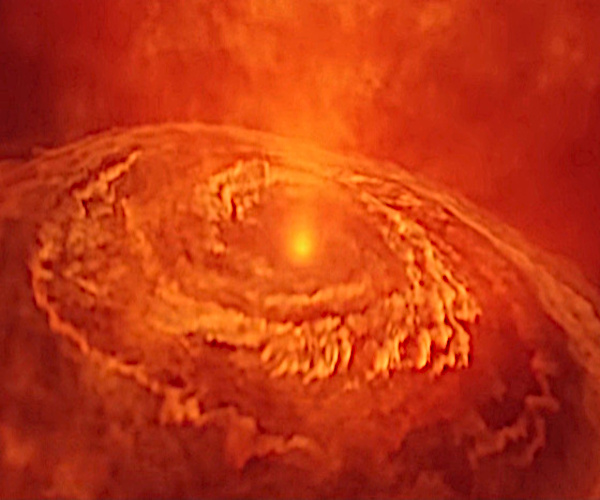
Image: The chaotic formation of the solar system is responsible for many unique features of our system.
4.5 billion years ago, the formation of the solar system was a complex and extremely chaotic process that spanned millions of years.
As can be observed today in other star systems in formation, the solar system formed from a huge cloud of very cold and very dense interstellar gas and dust called the giant molecular cloud.
It is in these cocoons of dust and gas that stars are born.
The giant molecular clouds, in fragile balance, can be subjected to external disturbances, such as shock waves generated by supernovae, explosions of massive stars. These disturbances can compress and disrupt clouds and lead to gravitational collapse.
Random motions of gas and dust molecules, known as Brown motions, can also lead to density fluctuations and also contribute to gravitational collapse.
When the radiation pressure and the thermal pressure exerted by the gas and dust, is no longer sufficient, the gravitational force takes over and the cloud begins to collapse. Then under the effect of its own gravity, its collapse accelerates. In the center, the matter concentrates, the temperature increases and the protostar absorbs all the surrounding matter.
When the protostar reaches a sufficient mass (about 80 times the mass of Jupiter), thermonuclear reactions begin. The whole system is carried away in a protoplanetary disk rotating more and more rapidly around its center. It is at this point that the aggregates of matter and gas begin to form increasingly large rock clusters, until they form protoplanets.
Near the ice line, at 4 astronomical units, the giant planets form first, accumulating matter around them and carving a furrow in the accretionary disk in just one million years.
The gravitational disturbances caused by the giant planets will cause dramatic collisions altering the temperature, density and chemical composition of the protoplanetary disk.
Inside the ice line, in front of Jupiter and Saturn, a few dozen Mars-sized planets are forming. But beyond Jupiter and Saturn, a dozen planets the size of Uranus are also forming. This process of planet formation has not been smooth and linear but rather chaotic.
The migration of the giant planets will push in front of them many protoplanets towards the Sun causing terrible collisions. Most of the protoplanets disintegrate and are thrown into the nascent Sun.
According to current models of the formation of the solar system, Jupiter and Saturn migrated towards the center of the solar system during the first million years of their existence. This migration was caused by gravitational interactions between the giant planets and the disk of gas and dust that surrounded the young Sun.
Computer simulations suggest that this period of chaotic formation resulted in significant exchanges of mass and motion between the forming bodies, leading to planetary migrations and violent collisions. Protoplanets may have been ejected from the solar system or crashed into the Sun, while others merged to form more massive planets.
When the giant planets stop their migration due to gravitational feedback, there are only 4 inner planets left, lucky you!
Back on the ice line, Jupiter and Saturn also cause chaotic gravitational disturbances behind them. It is likely that some planets were expelled from the solar system or put into highly elliptical and highly inclined orbits. Only Uranus and Neptune remain today.
The axis of rotation of Neptune (28.32°) and especially that of Uranus (97.8°) show that these planets have undergone titanic collisions testifying to the violent past of our solar system.
This chaotic period shaped the structure and composition of the solar system as we know it today. It is responsible for many unique features of our solar system.